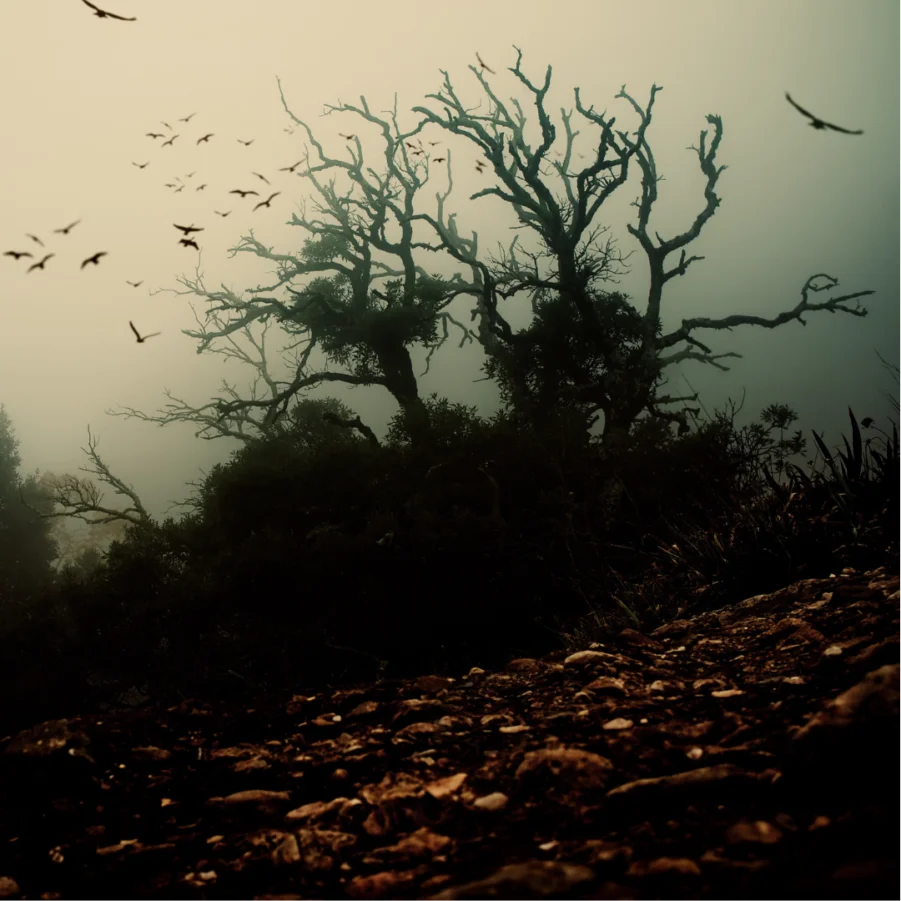It’s always worth having cool nature facts at your disposal, whether it’s for a conversation starter or trivia night your local pub. In this Biologist Ruins Everything post, I’ve collected 12 spooky, horrible nature facts to shock and terrify your friends.
While ghost stories around the campfire are great, nature’s imagination and ingenuity far exceeds our own. This is no different for things that are spooky, scary, ugly, and downright awful. Just in time for spooky season, check out these twelve spooky nature facts below!
1. Zombies are real
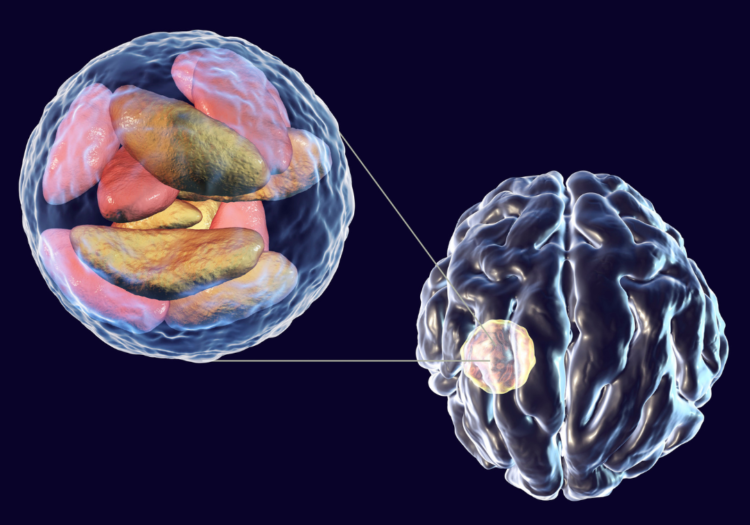
For the first of these spooky nature facts, let’s process the fact that zombies are absolutely a real thing.
In the natural world, the zombie apocalypse is already here. There are dozens of documented cases of organisms from fungi and protozoans to creepy worms that turn living animals into something like the walking dead. Specifically, many organisms have found ways to control the minds of other animals.
These terrifying creatures can bend the wills of other forms of life to their own sinister ends. Let’s check out some examples:
Massospora cicadina
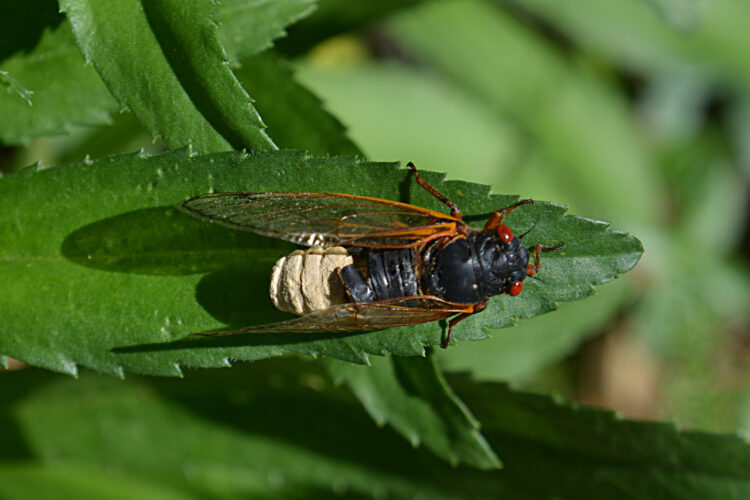
This fungus turns periodical cicadas into “salt-shakers of death”, spreading its spores to other cicadas as they attempt to mate. It eats out the cicada’s guts and turns the cicada‘s butt into a spore-making factory!
Horsehair worms
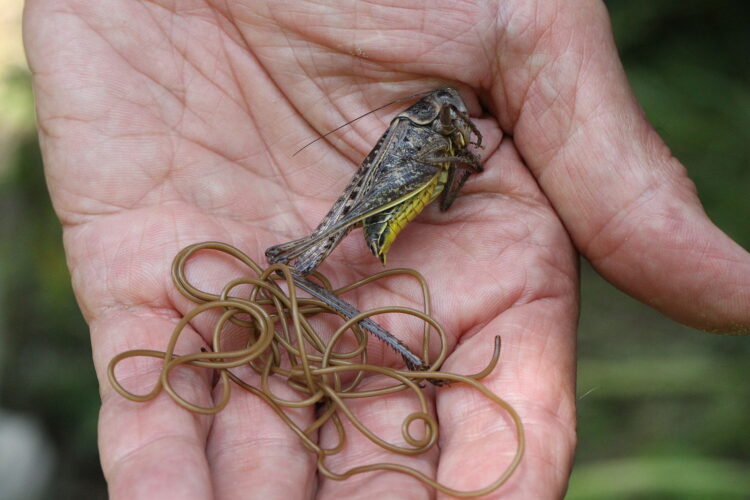
Horsehair worms (Phylum Nematomorpha) are long, thin worms that live inside of large insects and eat them from the inside out. Since they reproduce in water, they will mind-control their zombie hosts to drown themselves in ponds and puddles. The worm can then escape and breed.
The green-banded broodsac (Leucochloridium paradoxum)
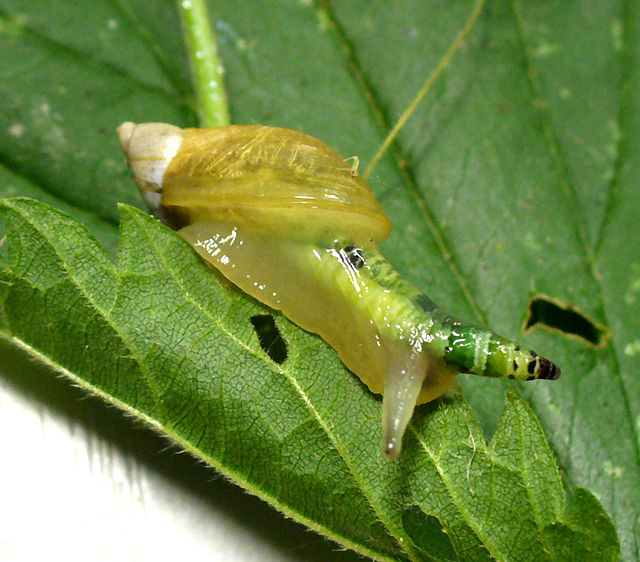
First of all, that common name is enough to give me nightmares. This flatworm fills snail’s head with pulsating sacs of eggs that develop in its eyes. These disgusting sacs pulsate rhythmically and flash colors like a neon sign to convince birds to eat the zombie snail. The adult parasites then pass through the bird’s gut, latch onto the inside of its cloaca (read: butthole) and release eggs into its poop.
Toxoplasma gondii
Toxoplasma gondii is a protozoan that reproduces in cats (yes, especially housecats!). It mind-controls mice to be less frightened of cats, so they are more likely to be caught and eaten. Since many people spend a lot of time around cats, especially doing things like cleaning litter boxes, the parasite can transfer over to us. T. gondii infects lots of people worldwide, and can increase the likelihood of neurological disorders.
Cordyceps mushrooms

Cordyceps is one of the most famous examples, a fungus that devours insects alive. These fungi infect a wide variety of bugs and spiders, eating them from the inside out. Eventually, they influence their hosts to approach others of their species and spread spores to them. Sometimes, they grow a mushroom structure out of the bug’s head to spread their spores!
The lancet liver fluke (Dicrocoelium dendriticum)

The lancet liver fluke infects ants and makes them climb tall vegetation and latch on with their strong jaws. This gets them accidentally eaten by grazing animals like cows or deer. The fluke, in turn, lives and breeds in the mammal’s liver.
The crypt-keeper wasp (Euderus set)

The crypt-keeper parasitizes a gall-making wasp and makes it plug the escape-hatch in its nursery shelter with its own head. The zombie wasp gets stuck in the exit hole of the gall, and dies. This isn’t a problem for Euderus set. The baby crypt-keeper literally crawls out of its hosts “skull”, then heads out to live its own disturbing life.
2. Some moths can channel Cthulu through their butts
Male butterflies and moths (order Lepidoptera) have special organs in their abdomens for courting females. These coremata or “hair-pencils” give off a cocktail of pheromones and other chemical scents. This creepy perfume gets females interested in mating while warding off rival males.
Although their form varies from species to species, hair-pencils are generally hidden inside the bug until they are ready to mate. Next, they inflate them with blood or air to disperse their magnetic cologne. As Brian Fantana said, “it works 60% of the time, every time.”
But let’s get to the really unsettling part. In some species, hair pencils are huge and scary looking. For example, the moth Creatonotos gangis‘ hair-pencil looks like it summoned the demon lord Cthulu out of its rear-end.
3. This crustacean replaces fish tongues with itself
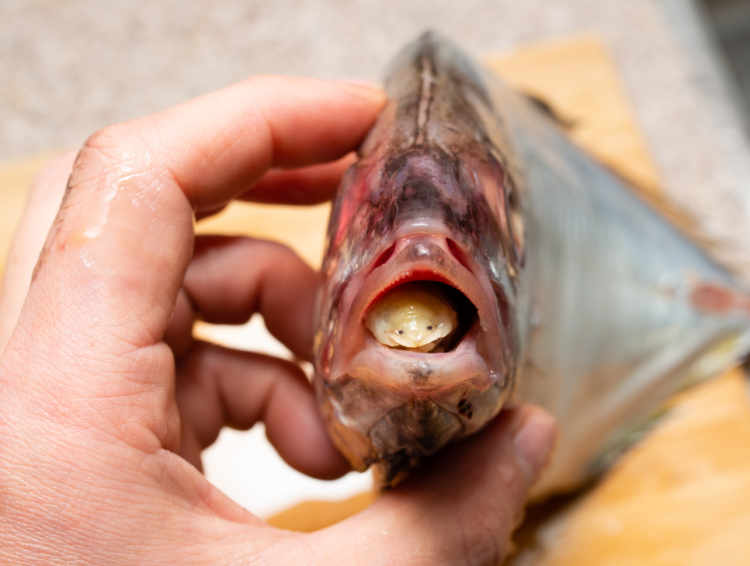
This spooky nature fact might be familiar nightmare fuel for some people. Cymothoa exigua is an isopod crustacean, just like the friendly roly polies you might find in your garden. Unlike docile pillbugs, C. exigua also known as the tongue-eating louse (yikes!) is a parasite that infects fish.
While smaller male tongue-eating lice live in fish gills, females establish themselves in the fishes’ mouths. They cut the blood vessels that feed the fishes’ tongues, making them wither away and eventually fall off. Next, the louse attaches itself to the musculature of the fishes’ former tongue and replaces it.
In other words, females in this species become the new tongue of their host-fish victims. How generous of them!
4. Some mosses and lichens can grow on bones

Mosses and lichens have spores rather than seeds, which enables them to quickly establish on fresh surfaces to grow on. Furthermore, they don’t need to build roots, leaves, or other complex structures to live their lives. Their efficient design means they quickly move in to any available habitats.
Even when those surfaces happen to be the sun-bleached bones of long-dead animals. Yes, you guessed it: people too! Human remains left outside will eventually be colonized by these fascinating, plant-like organisms.
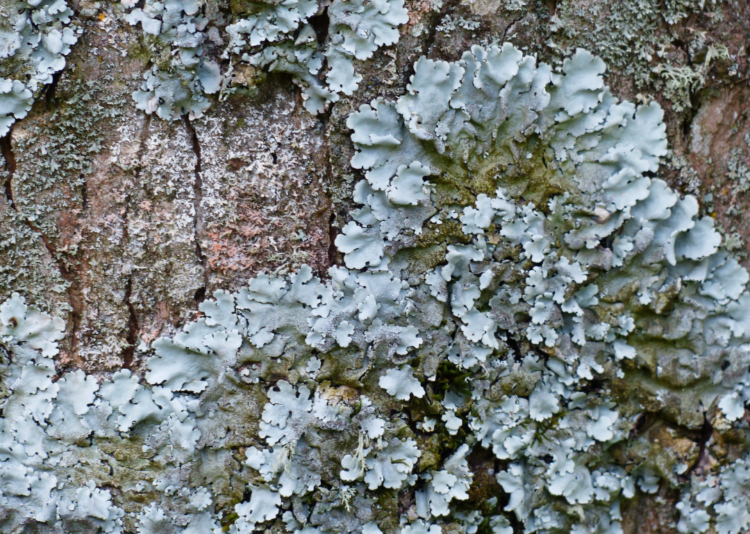
In fact, detectives use some species of lichens and mosses to learn things about remains that they find. For example, some species and their level of growth can tell detectives how long a corpse has been around (the Post-Mortem Interval).
The way that mosses grow, compared to plants, allows scientists to estimate their age very precisely, shedding light on the situation behind the remains.
5. Insect vampires are more likely to kill you than sharks, tigers, snakes, and spiders combined

Aside from humans, the deadliest animals on Earth are mosquitoes. While, yes, they bite and suck blood, it’s not the bite that matters, but what comes with it. Vector-borne diseases, those that get inside our bodies with the help of a biting insect, are a massive health threat.
A huge number of diseases from bug bites affect people all over the world each year. While those numbers have only gone up since then, estimates were a billion people annually got sick or disabled from vector-borne diseases. Meanwhile, one million people a year were killed by the after-effects of bug vampires.
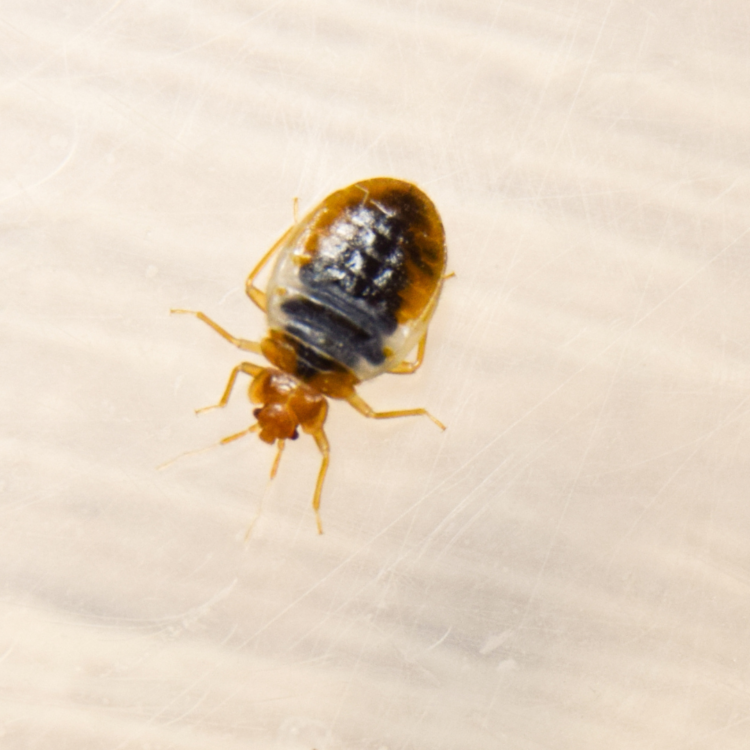
That’s more than just about any other dangerous animal you can think of, combined!
Here are just a few of the awful bug vampires to look out for:
- mosquitoes
- biting midges
- kissing bugs
- bedbugs
- tsetse flies
- Ticks
6. Vampire bats like to puke blood into one-another’s mouths

I hope you’re hungry! This might be the most stomach-turning of all spooky nature facts. I’m sure you’re already familiar with vampire bats, the cuddly real-life Nosferatu’s that lap up blood from wounds they bite in other animals’ skin.
Well, they’re not done creeping us out yet. Fantastic behavioral research from the early 90’s showed that vampire bats often share food with one another in their cave colonies. Adorable, right?
Bats returning home with a bellyful of blood will puke up some of their meal to share with friends who were less fortunate. So if you’re a bat that’s hard on your luck, don’t worry, your neighbor will probably gag you up some horror movie gore so you don’t go hungry.
It’s all so very sweet! More recent research has actually shown that all of this puke-sharing makes the bats’ gut microbiomes more similar to their neighbors. I guess mine would be too if my social life involved constantly exchanging bloody upchuck.
Finally, it’s important to remember that the majority of bats are helpful insect-eaters and pollinators. They perform a whole range of valuable functions for our ecosystems and are nothing to be afraid of. For more cool bat facts, check out this post.
7. This terrifying gecko exists
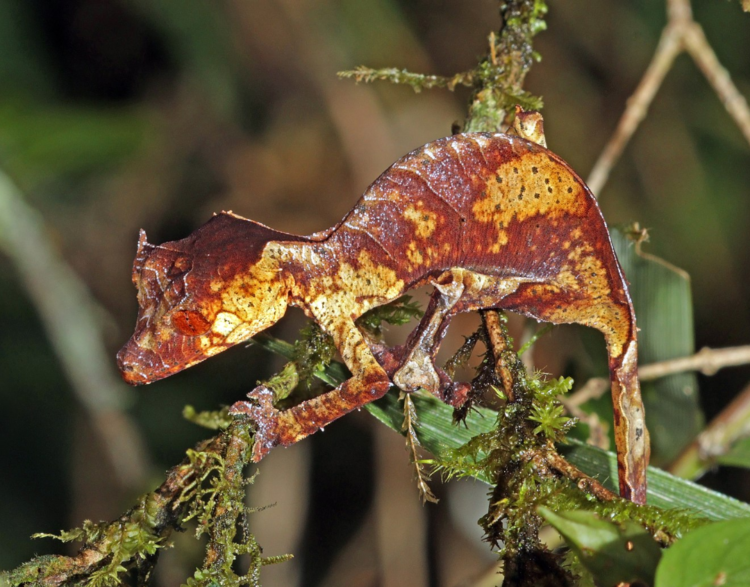
In yet another case of nature being totally metal, there is a this fantastically evil-looking lizard. The satanic leaf-tailed gecko (Uroplatus phantasticus) has one of the spookiest common names I’ve ever heard. Honestly its scientific name isn’t half bad, either; “phantasticus” is pretty high praise!
This tree-climbing lizard is endemic to tropical forests in Madagascar, where it feeds on insects with its excellent camouflage. Indeed, U. phantasticus owes its satanic vibes reputation and sinister look to adaptations that help it blend in with forest leaves.
Scientists have found no formal link between this wild lizard and the Satanic Church. However, that doesn’t necessarily mean Uroplatus phantasticus isn’t secretly demonic, right? Needless to say, this fellow is much more likely to steal your soul than offer up sweet deals on car insurance.
8. This fish can see through its own head
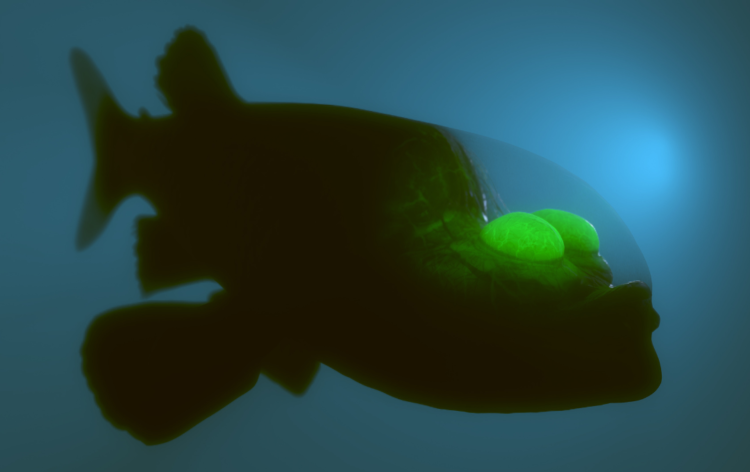
As long as some spooky nature facts involve the mere existence of creepy animals, I can’t leave this one out. The barreleye fish (Macropinna microstoma) is an absolute nightmare beast that—you guessed it—comes from the deep sea.
The barreleye has freaky tube, or cylinder-shaped eyes that can pivot around at unsettling angles. Most creepily, their skulls are fully transparent domes. This means that they can look through their own skulls to spot predators and prey alike.
If this weren’t creepy enough, scientists guess that this adaptation arose because of the fishes’ frequent run-ins with siphonophores. What’s a siphonophore? I’m so glad you asked!
These relatives of jellyfish are colonial, stinging organisms that can get up to lengths of 130 feet (40m). Biologists think that barreleyes are kleptoparasites to these monsters, stealing the fish that they snare in their many stinging tentacles. The barreleye’s skull protects their eyes from damage.
9. There’s a serial killer bug that wears the skins of its victims

Learning more about nature, most of us quickly figure out that Bugs take first place for the weirdest adaptations and lifestyles among animals. When it comes to spooky nature facts, they are no exceptions.
Among predatory insects, there are quite a few that are ambushers. They hide or camouflage themselves, then strike when least expected. Some may even make ghillie-suits by covering themselves in junk they find laying around. For example, lacewing larvae end up looking more like walking dustbunnies than ferocious and beneficial garden predators.
At least one species in the predatory bug family Reduviidae takes this from cute to horrific. Acanthaspis petax, found in East Africa and Malaysia, is an avid ant hunter. However, when it’s done snacking on ants, it glues their drained bodies on its back.
More mature larvae can have dozens of ants, or at least their mangled parts, piled up on top of them. This backpack of its serial-killer victims may serve to better protect the bug from predators. And since ants typically communicate and identify one another by smell, it may also help with stealth. A wolf in sheep’s clothing perhaps?
10. Horned lizards shoot blood from their eyes
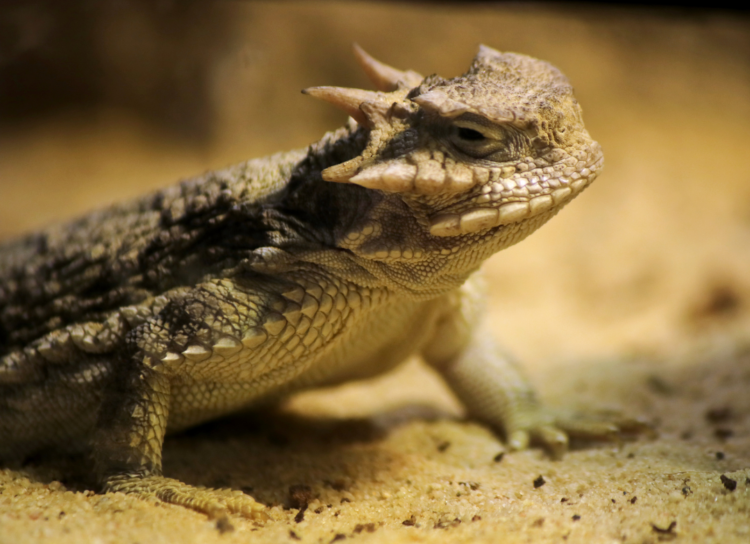
One of the most classic spooky nature facts is the horned lizard’s (genus Phrynosoma) ability to projectile-cry blood from its eyes. This insane strategy is a last-ditch defense mechanism that these desert-dwellers use to surprise and deter predators when they’re being grabbed.
Horned toads are only found in North America, and are particularly well-suited for drier Mediterranean and desert habitats in the American West. Several species of horned lizards can do this bizarre trick. How they actually do it is just as disturbing as the fact that they can do it.
They build up blood pressure in their heads by constricting certain vessels, then rupture the capillaries around their eyeballs. This behavior is known to scientists as ocular autohemorrhaging.
Blood comes shooting out, potentially reaching distances of up to 5 feet (1.5m). Horned toads can apparently aim this jet of blood to make sure it hits home. Yikes!
11. Some shark babies eat their siblings before being born
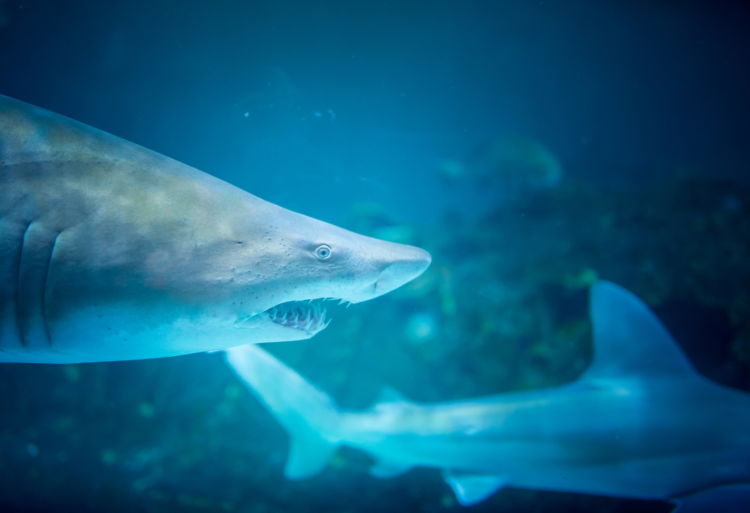
Sharks are ancient, fascinating animals that existed before the dinosaurs, and even before the earliest trees. Being that old, some of their adaptive strategies obviously work will. Some of those strategies, though, are downright terrifying.
Sharks in the order Lamniformes have millions of eggs inside their bodies at a time, many of which get fertilized after mating. Instead of laying these eggs like reptiles or birds, sharks keep these eggs inside. Baby sharks hatch inside of their mothers, and that’s when things get scary.
The first-hatched embryos tend to eat the surrounding eggs (fertilized or unfertilized!) as a protein source, boosting their own growth. As time goes on, they may also eat other embryos inside their mother. In other words, these baby sharks are eating their siblings before they are even born.
The sand tiger shark (Carcharias taurus) is the best known example of this strategy, where unborn siblings regularly cannibalize their littermates. But how could such a bizarre behavior evolve?
It does have its advantages: the largest embryo tends to grow extremely fast as it dines upon its brothers and sisters. This means that when these killer babies finally emerge into the world, they’re big enough to escape many of their major predators. This could give that one new shark a much better shot at survival.
12. Dead man’s finger fungus is awful
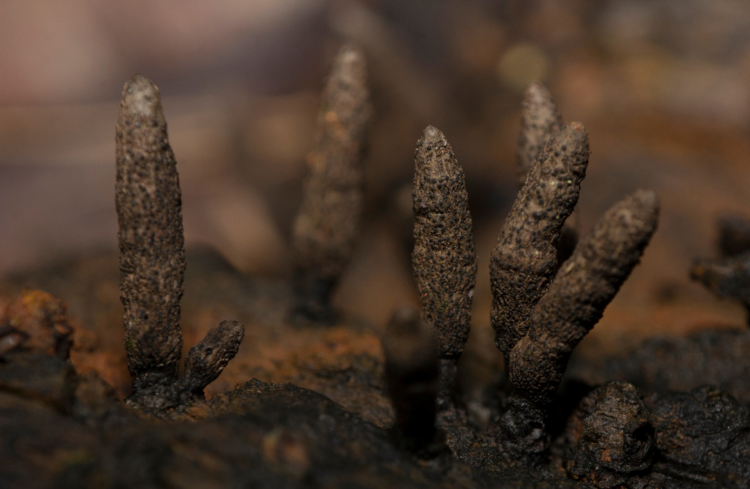
Finally, it’s worth knowing about this horrific fungus, which often grows in disturbingly hand-like forms right out of the soil. Xylaria polymorpha or dead man’s fingers lives in the leaflitter of temperate forests in Europe and North America.
Although these mushrooms put forward different appearances throughout fungus’ reproductive cycle, at one stage they look especially ghoulish. It’s easy to imagine the rotting fingers of the undead clawing their way to the surface world.
Thanks for reading spooky nature facts!
I hope you enjoyed these macabre and horrific natural history facts. If you’ve got your own scary nature tidbits to share, let us know in the comments or via the Contact page. Until next time!

